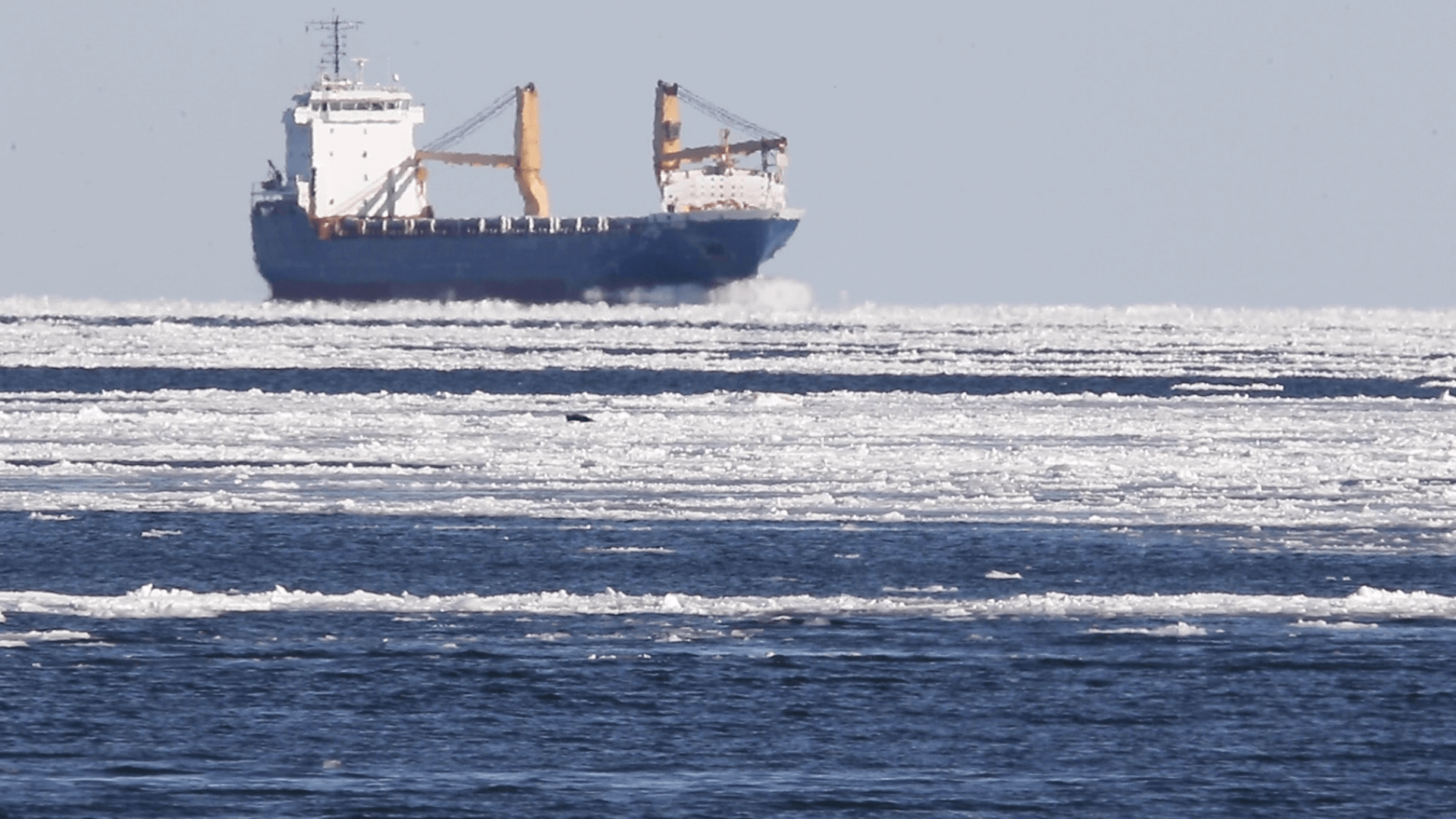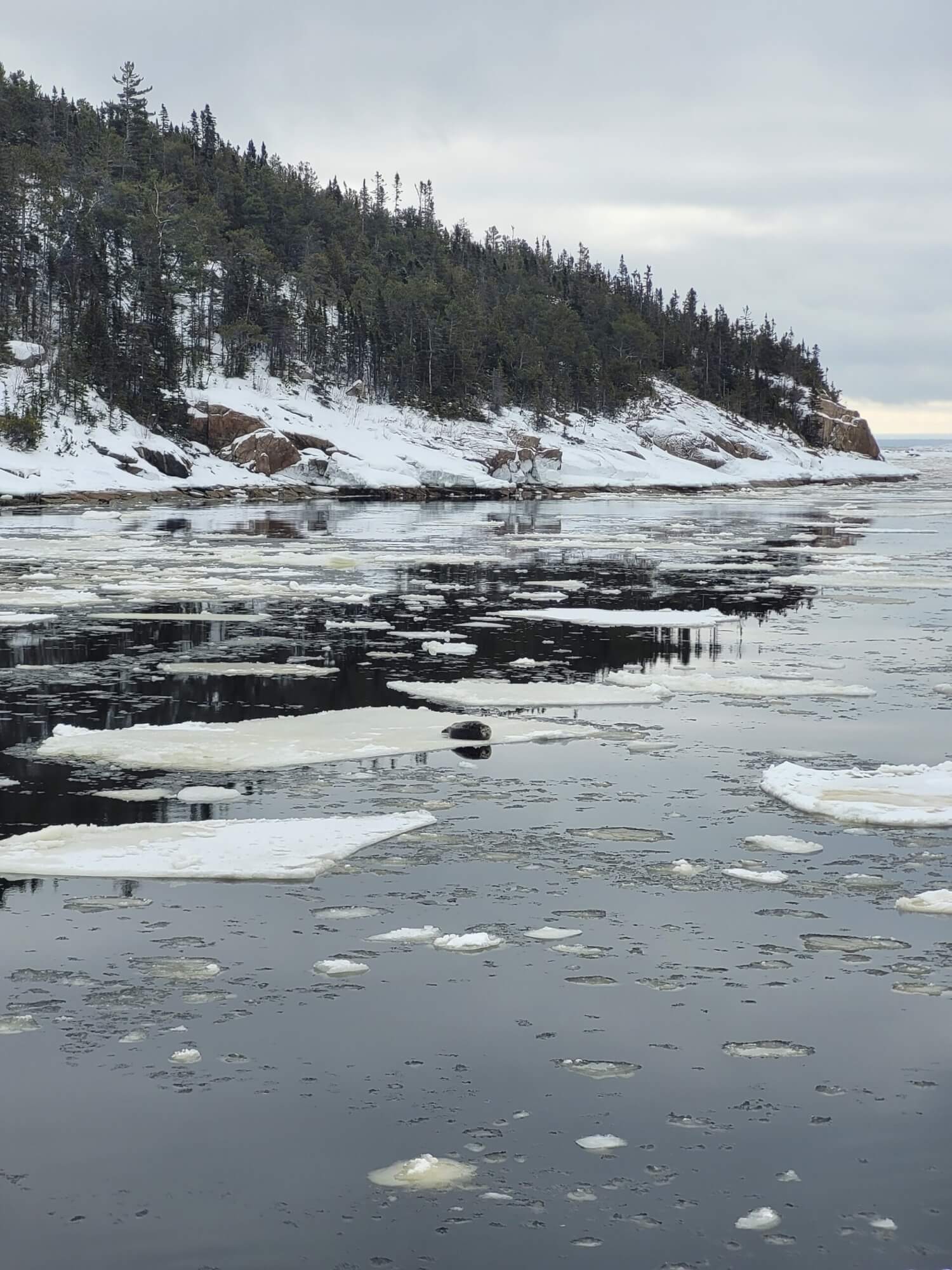A blue whale venturing near the coast, seals resting on blocks of ice, a solitary beluga that shows its tail when it dives, and a mysterious mirage that kindles curiosity… There was action in the St. Lawrence this week!
It was in the Bay of Sept-Îles that the blue whale came to surprise local inhabitants. “It was a small individual,” explains Jacques Gélineaux, navigator and marine mammal observer. “It’s not uncommon to see blue whales here in winter, but they don’t normally visit this sector.” No seals were seen however, as there is no ice.
Blue whale migrations are poorly understood. While some individuals seem to spend the winter in the Gulf of St. Lawrence, others are believed to travel to warmer latitudes along the east coast of the United States and even as far as Bermuda. These whales are fast: The Mingan Island Cetacean Study (MICS) has already recorded an individual that completed a 400 km journey in just two weeks!
On the ice
At Cap de Bon-Désir in Les Bergeronnes, a popular land-based observation site for marine mammals, a photographer has the chance to capture images of harp seals and harbour seals, in addition to observing a grey seal.
Between Tadoussac and Baie-Saint-Catherine, ferry passengers observe a harbour seal resting quietly on a chunk of ice, while one attentive observer manages to spot the back of a beluga. The cetacean even shows its tail when diving! In Les Escoumins, a few seals are seen near the coast. Farther offshore, a pilot is surprised by the presence of a bald eagle scanning the water surface from its perch atop a block of ice. Seals are also observed on the other side of the river, off the coast of Cap-des-Rosiers.
Optical illusions
Our eyes can sometimes play funny tricks on us. A few days ago, a local resident from Gallix saw and photographed an island on the horizon that was quite unique… It seemed to be floating over the water! This type of sighting is commonly called Fata Morgana in reference to Morgan the fairy, a character from the legend of King Arthur. Boats, islands and even lighthouses have already been seen rising above the water.
This mysterious phenomenon is neither magic nor the result of “photoshopping.” Rather, it has a rational explanation: It is an optical illusion. For this rare mirage to occur, a number of conditions must be met. Layers of warm and cold air must overlap and as light rays pass through the different layers of air, the difference in density will create a deflection of light, which will cause an illusion.
Share your observations!
Have you seen any marine mammals in the St. Lawrence? Whether it’s a spout offshore or just a couple of seals, drop us a line and send your photos to [email protected]!







